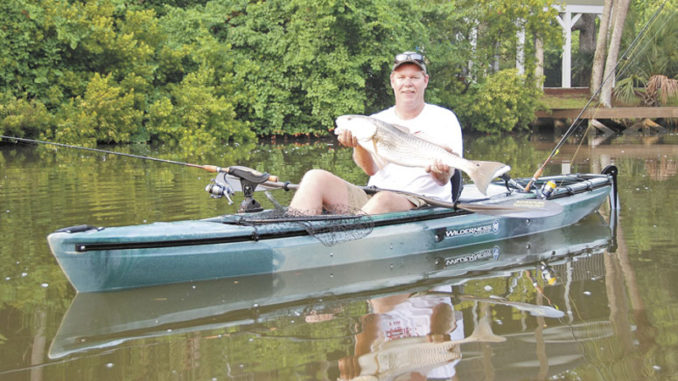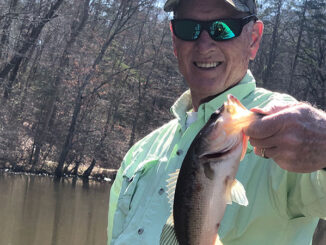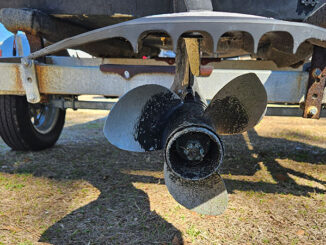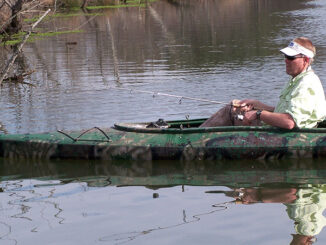
It’s code red all month for kayak anglers
The tidal marshes of the Carolinas are like no other area in the country. The alluvial tides inherent to the area create a constantly changing environment where tidal flows vary anywhere from 3 – 8 feet per cycle. Every 6 hours an average of 6 feet of water moves in or moves out of the marsh.
As an inshore angler, you either learn to love it or hate it. Anglers are constantly on the move to find a pattern before the tide changes the game, taking the fish with it.
Veteran kayak anglers relish the view of the marshes, inlets and bays up and down the coast from a cartop plastic boat that may only weigh a little more or less than 100 pounds. What some may see as a handicap, these anglers view as a distinct advantage.
Redfish (which many North Carolina anglers prefer to call by their proper name, red drum) move in and out of the Carolina marshes with the tides. This gives kayaking anglers the ability to get much closer to fish and to pitch a bait in front of them, more silently in the shallow water than anglers in a bigger boat.
Get shallow
That advantage doesn’t always necessarily translate into a caught fish. But it does give the silent minority the opportunity to try to figure out what they’re willing to hit if they’re being picky or really mop up if they aren’t.
The dawning of May and into June sees redfish starting to break out of their tightly grouped winter pattern as the waters warm and the early food sources begin to emerge in the marsh. It’s a time when smaller baits and more precise presentations catch more fish than trying to power-fish an entire area.
Following the push of the tides far up into the marsh, many kayak anglers prefer to use a push pole to propel the boat in just inches of water while standing and casting to reds along the bank. Kayak anglers may not have the range of a power boat, but they can more than make up for that by getting into schools of fish that would otherwise be inaccessible.
“Getting up on those grass flats before a boat can with only a few inches of water, it’s amazing to see redfish stalking your bait in only 4 or 5 inches of water,” said Georgetown, S.C. kayak fishing guide Mike Eady. “On certain tide levels, that’s all the water that’s on the flat and some days that’s all the redfish want. I love those days when you get the reds with half their backs coming out of the water, pushing through that grass, aggressively feeding.”
Focus on structure
Speaking of structure, Eady indicated that even newcomers to kayak fishing in the Carolinas can quickly learn what makes it good for fishing simply by being patient and observing the surroundings. He said the benefit of so much tidal fluctuation is that when the tide goes out, it uncovers the oyster bars, ditches, and other structure that fish will hold on just as soon as the water returns. Anglers can return to those areas with a better understanding of how fish will relate to them.
“Depending on where you’re at, an average tide is 5 feet and we can see upward of 7, 7 ½ feet of total water movement,” he said. “When that happens, that creates a lot of current but also gives you unique opportunities as a fisherman to see your environment, to see what’s out there, to see what fish are laying next to, to see the structure, to see the drop-offs, the channels, the points. I encourage everyone who catches a redfish to come back to that spot and see why that fish was there. If you do that, it won’t take you long to become a better angler.”

Kayak anglers get a Grip
Space for gear, when fishing from a kayak, is at a premium. Kayak anglers frequently find themselves doing without or making do with what they have because they don’t have room for all of the equipment that is taken for granted in a larger vessel.
While the stability of today’s plastic armada is also on average better than it has ever been in the past, packing gear that floats if accidentally dropped overboard is another big plus. One must-have kayaking item that fits this bill nicely is a product made by United Plastic Molders called “The Fish Grip”.
The Fish Grip is a sturdy, plastic landing device that incorporates a unique jaw design that holds the lip of the fish securely and can handle even large fish. The over-center locking mechanism allows you to grip it to lock onto the fish and flip the handle to open.
A weight scale slot allows you to weigh the fish without releasing it from the grip (just deduct 5 oz. from the weight). The durable plastic grips come in six hi-vis colors including glow-in-the-dark. The grip has a wrist lanyard in case it slips, and it also floats.
“Personally, I just like this grip for landing a fish,” said kayak expert ‘Dolphin Dave’ Hamilton, from Mt Pleasant, S.C., “especially if it’s a catch-and-release tournament where I need to get a picture of the fish. It helps me kind of hold the fish on to my measuring board. With some of the bigger reds they are catching, you know they just won’t fit into a net.”





Be the first to comment